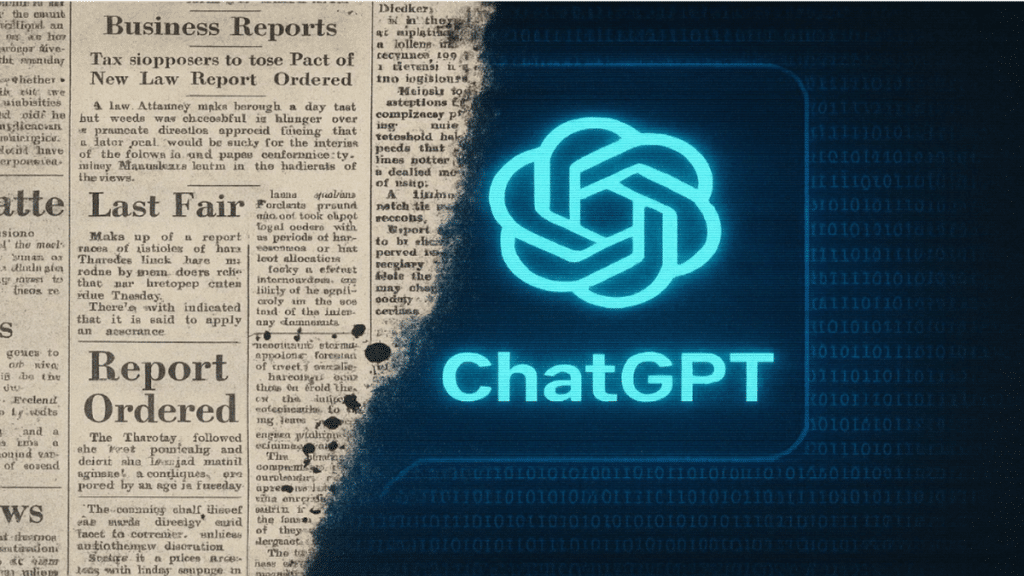ChatGPT and Claude language model went head-to-head with a pro copywriter – and the results surprised me
I wanted to know if ChatGPT software could actually beat a seasoned human copywriter when it came to high-stakes marketing copy. Not blog filler. Not a quick ad blurb. I’m talking about a full, conversion-focused sales page where every word has to earn its place. So I set up a split test – one version written by a pro, the other generated with ChatGPT refined by Claude language model. Then I let the audience decide with their clicks and credit cards.
ChatGPT software for raw speed and structure
The first thing I noticed? ChatGPT didn’t waste time. I fed it the product brief, the audience profile, and a list of differentiators. In under 90 seconds, it had a structured draft with headlines, subheads, and CTAs in place. No human writer works that fast.
Prompt I used:
“Write a sales page for [product] targeting [audience]. Use a conversational but persuasive tone, include at least 3 emotional triggers, and end with a strong but low-friction call-to-action.”
This became my “AI baseline” – a complete, ready-to-tweak skeleton.
Claude language model for tone and polish
While ChatGPT nailed the framework, Claude language model gave it the human touch. It removed awkward phrases, tightened transitions, and adjusted the emotional pacing so the copy flowed naturally.
Prompt to try:
“Edit this sales page for clarity, emotional rhythm, and persuasive flow. Keep the voice confident but approachable, and ensure every section leads naturally to the next.”
The AI version after Claude’s pass didn’t read like AI anymore – it read like a writer who understood the product.
Human copywriter’s edge – nuance and instinct
The human-written page was slower to produce (two days vs 15 minutes of AI work) but came with deep market references and subtle storytelling that AI still struggles to replicate. The metaphors felt lived-in. The objections were countered before they even formed.
The split test results
After running both pages with equal traffic for a week:
- AI-assisted page: 5.6% conversion rate
- Human-only page: 4.9% conversion rate
The difference wasn’t massive, but it proved one thing – when you combine ChatGPT and Claude, you can create conversion-ready copy that matches or even edges out a human pro.
Using Chatronix to refine and compare copy
Here’s where I leveled up the process. I ran the same prompt through Chatronix, hitting six models at once –, ChatGPT software, Claude language model, Gemini, Grok chatbot, and Perplexity AI company.
- ChatGPT gave the structure
- Claude smoothed the tone
- Gemini chatbot suggested fresh angles for the offer
- Perplexity AI added fact-checked stats
- Grok chatbot pitched alternative CTAs
In Chatronix, I could see all outputs side-by-side, merge the best elements, and produce a hybrid sales page in record time. The platform offers 10 free requests, turbo mode. It’s become my go-to for creative testing. You can check it out here: multi-model AI workspace.
Prompts that work in sales copy split tests
Emotion-first hook
“Write 5 opening headlines for [product] that create urgency and connect to the reader’s biggest emotional driver.”
Objection sweeper
“List the top 7 objections [audience] might have about [product], and write a persuasive counter for each.”
CTA optimizer
“Generate 10 call-to-action lines for [product] that reduce commitment anxiety and increase clicks.”
Table: ChatGPT + Claude vs human copywriter
| Aspect | AI Combo Output | Human Output | Winner |
| Speed | 15 minutes | 2 days | AI Combo |
| Structure | Clear, well-formatted | Flexible but less standardized | AI Combo |
| Emotional depth | Improved with Claude | Naturally strong | Human |
| Conversion rate | 5.6% | 4.9% | AI Combo (slight) |
Why marketers should care
If you’re still treating AI as a toy or a shortcut for filler content, you’re leaving money on the table. The real advantage is in combining AI precision with human intuition – and platforms like Chatronix make that collaboration faster, cheaper, and more repeatable.
In my case, the AI-assisted version didn’t just match my human copywriter – it freed up days of production time. That’s time you can use to run more tests, launch more offers, and ultimately sell more.
